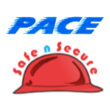Fire Extinguisher Types and Uses
Fire safety is crucial in any setting, whether it’s at home, in the workplace, or in public spaces. One of the most important tools for fire safety is the fire extinguisher. But did you know that not all fire extinguishers are the same? Each type is designed to tackle different kinds of fires. Let’s dive into the basics of fire extinguishers—what types are available and how to use them effectively.
Types of Fire Extinguishers
Fire extinguishers are categorised based on the type of fires they can effectively put out. There are several common types:
- Water (Class A): These extinguishers use water to put out fires caused by ordinary combustibles such as wood, paper, and cloth. Neither grease nor electrical fires should be treated with them.
- Dry Chemical (Class BC or ABC): Suitable for fires involving flammable liquids (like oil, gasoline) and electrical fires. This type of extinguisher can be found in many homes and businesses due to its versatility.
- Carbon Dioxide (CO2 – Class BC): Effective for electrical fires and flammable liquid fires. CO2 extinguishers put out fires by smothering them with displaced oxygen.
- Foam (Class AB): Foam extinguishers are suitable for fires involving flammable liquids and solids. The foam helps cool the fire and prevent re-ignition.
- Dry Powder (Class D): Used for fires involving metals such as magnesium, sodium, or potassium. These extinguishers work by forming a crust over the fire, cutting off the oxygen supply.
How to Use a Fire Extinguisher
It’s just as crucial to know how to use a fire extinguisher as it is to own one. Follow these simple steps:
- Pull the Pin: Every fire extinguisher has a safety pin preventing accidental discharge. Pull this pin to unlock the extinguisher.
- Aim at the Base: Point the nozzle at the base of the fire, not at the flames themselves. This is the location of the fuel supply.
- Squeeze the Handle: Squeeze the handle or lever to release the extinguishing agent.
- Sweep Side to Side: While still aiming at the base, sweep the extinguisher nozzle from side to side until the fire is completely out.
Safety Tips
- Know Your Extinguishers: Familiarise yourself with the types of fire extinguishers available in your vicinity and what type of fires they can handle.
- Inspect Regularly: Check your fire extinguishers regularly to ensure they are in good working condition.
- Escape Plan: Always have an escape plan in case a fire becomes uncontrollable. Safety should be your priority.
Remember, fire extinguishers are designed for small, contained fires. For larger fires or if you are unsure about using an extinguisher, evacuate the area immediately and call emergency services.
Fire safety is everyone’s responsibility. By understanding fire extinguisher types and how to use them, you can play a vital role in preventing small fires from turning into disasters. Stay safe and be prepared!

